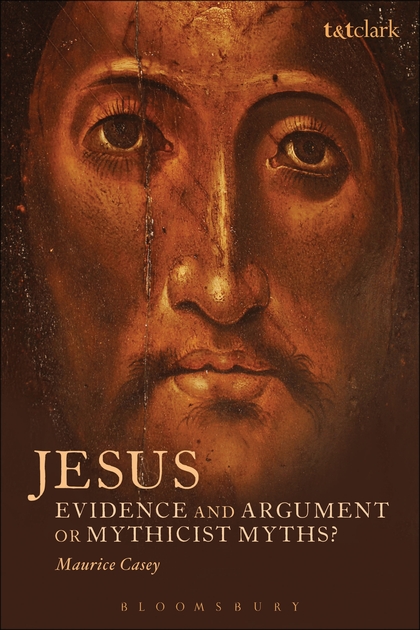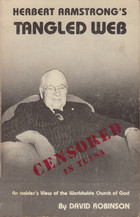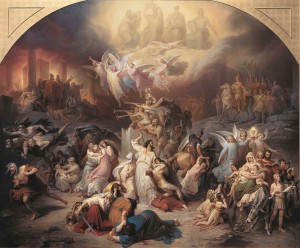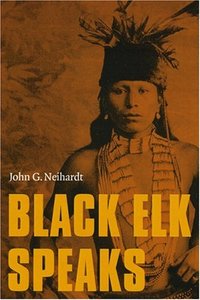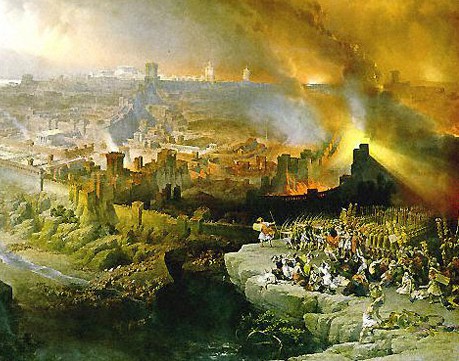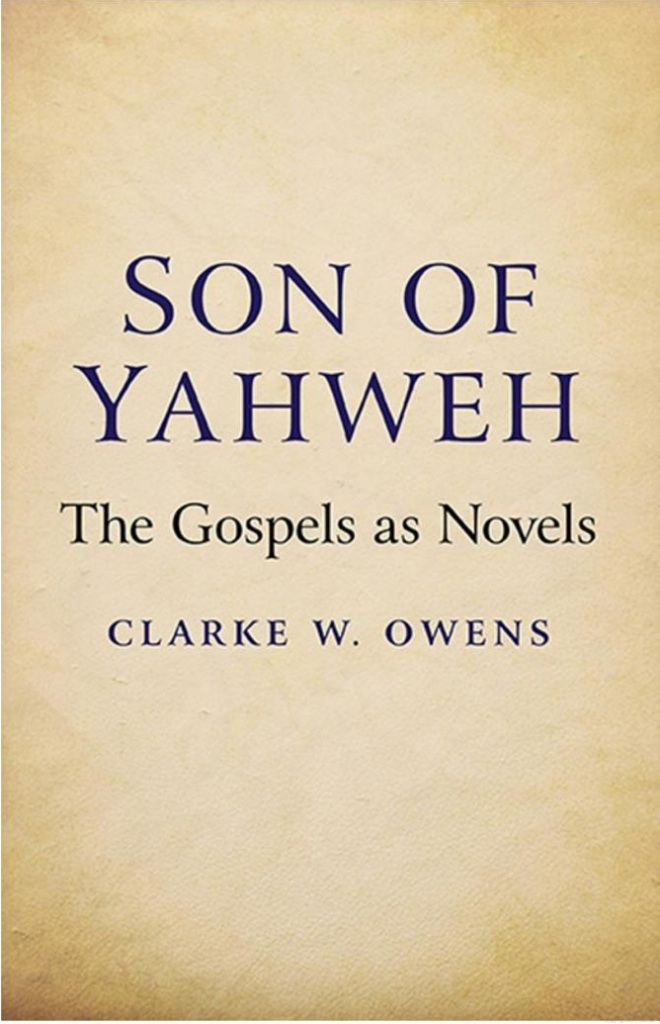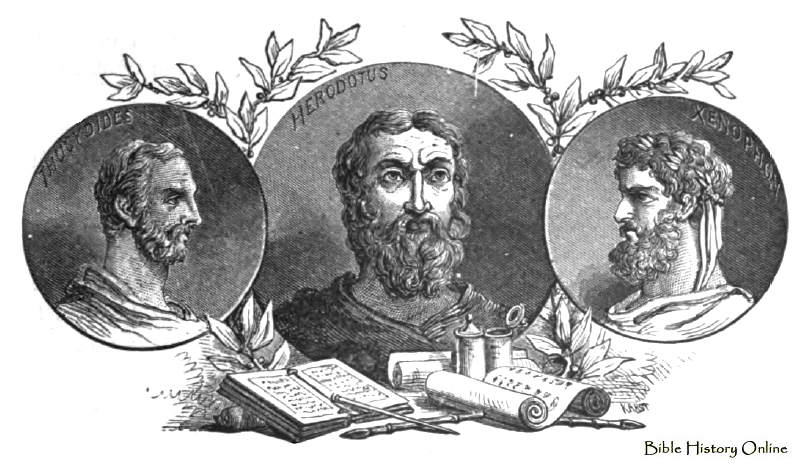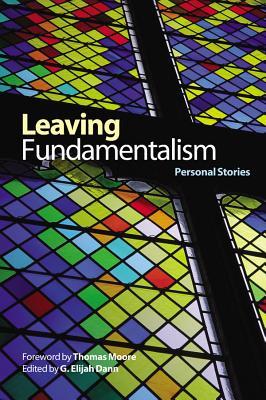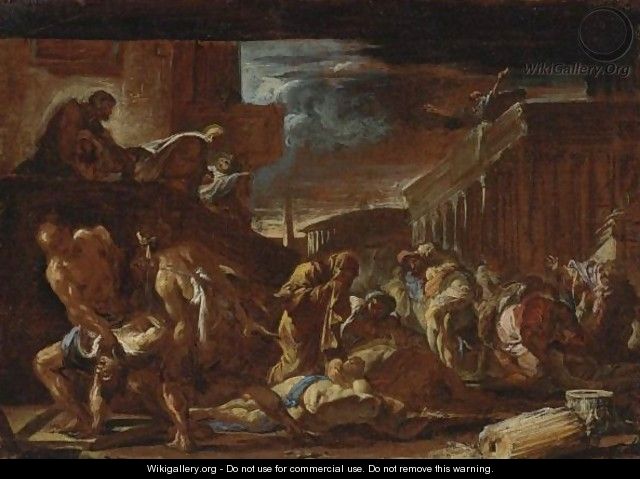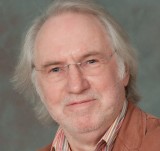 If Maurice Casey’s book Jesus: Evidence and Argument Or Mythicist Myths? were about Jews or Gays or Blacks or the Disabled he and his publisher may well be charged with inciting hatred against “the other”. Mythicists are portrayed as all alike, they are all psychologically twisted and motivated by evil intent, their faults are never innocent but always wilful, and they are a baleful influence on society generally. This book demonizes “mythicists”.
If Maurice Casey’s book Jesus: Evidence and Argument Or Mythicist Myths? were about Jews or Gays or Blacks or the Disabled he and his publisher may well be charged with inciting hatred against “the other”. Mythicists are portrayed as all alike, they are all psychologically twisted and motivated by evil intent, their faults are never innocent but always wilful, and they are a baleful influence on society generally. This book demonizes “mythicists”.
And like racist or homophobic literature it peddles its own myths and falsehoods.
There is never a lighter moment of human understanding and toleration or acceptance that the different views of “mythicists” might be honestly informed and sincere. Casey hammers into readers the message that mythicists are flat wrong about everything and that’s because they are incorrigibly unlearned and without exception despise genuine scholarship. If their evil motive is not the consequence of the way they have been psychologically and permanently ruined by their past association with a fundamentalist form of Christianity it is because they are, well, “bizarre”.
This book is the equivalent of a McCarthyist or anti-semitic tract. We need a new term to describe this demonization of mythicists. In the wider community now we even have the equivalent of racist and homophobic epithets that convey the contempt and loathing of “the other”. Myther and mythtic join the ranks of wog and fag.
A major theme of Maurice Casey (and one persistently expressed by his student and carer, Stephanie Fisher, in her almost 300 comments left on this blog two to four years ago) is that most mythicists are psychologically bent. The reason is simple. They (most of them) were once fundamentalists. Reading Casey’s book is a tiresome déjà vu experience: I find myself reading the same phrases, the same accusations, the same projections, the same misunderstandings as Stephanie continually unleashed between 2010 and 2012 on Vridar. At the time Stephanie petulantly repeated her threat to “go and tell” her “big brother surrogate”, Maurice Casey, all the complaints she had against me and to persuade him to write a book exposing me and all mythicists. So here it is. Steph’s revenge!
Sorry, Steph, but I cannot take it seriously. Anyone who does take it seriously despite the obvious vindictiveness that pervades it is not worth worrying about. It is a joke. My greatest amazement is that a publisher accepted it in the first place. Surely there’s a story to be told there one day.
Steph used to repeat the nonsense over and over that anyone who was a mythicist was motivated by a hatred of religion. And here we see the same old myth: when those who are now mythicists left their former religions they switched to being just as fundamentalist in their hatred of all forms of Christianity. They hate God and Jesus so much that they are determined to believe neither exists. The exceptions to the rule are, as we just noted, “bizarre”.
This crudely bigoted portrayal of mythicism was apparently picked up by Casey from Stephanie Fisher. In his Preface he writes:
Stephanie Fisher persuaded me to write this as she was concerned with a growing phenomenon, enhanced by amateur blogs on the internet and inspired partly by publications by Price and Doherty, that there was no historical Jesus. . . . She felt this mythicist element was fuelled by atheism and anti-religion which attacked scholarship as religiously motivated. . . . She therefore persuaded me to write this book.
Something “bizarre” often happens whenever Casey quotes words by those who have crossed him or his carer Stephanie. He quite often demonstrates a distinct inability to detect nuance and humour. Tim Widowfield and Richard Carrier in other posts have pointed out his failure to recognize humour in works he believes to be by mythicists; the same applies to nuance.
So, for example, when Casey finds an author whom he wishes to compare with mythicists he quotes him saying that a particular period of the Roman history is “one of the most historically documented times in history”, Casey immediately assesses the claim through either/or categories: “This is not the case”, he jumps in emphatically — look, “a normal province in the British Empire in the nineteenth or twentieth centuries” is far more “well documented” than “first-century rural Galilee”!
Or when another writer speaks of Joseph and Mary taking the baby Jesus down to Egypt and later “returning” to Nazareth, Casey cannot accept that the author might be using the term “return” in a general or short-hand sense and that he does not literally mean to imply that Jesus was born in Nazareth. Everyone knows the birth took place in Bethlehem, but it seems Casey is a product of a low-context culture and needs to have every nuance explicitly spelled out for him.
The pity of this is that Casey (and Stephanie) have embraced a black-and-white, one could even say Manichaean, two-dimensional view of those with whom they find themselves in disagreement when it comes to what they see as certain fundamentals.
And their inability to understand others in any normal rounded sense is not restricted to those they believe are mythicists. Casey uses this book to kick hard and personally at a number of scholars who have nothing to do with mythicism — apparently for no reason other than that they have criticized his work in the past. Americans particularly come in for a sound hiding. Casey stereotypes “the others” and their views.
So, with the occasional exceptions, for Casey
- Americans are regrettably deficient in every way — in scholarship, in social decency, and so forth;
- To move from fundamentalism to atheism is a mark of improper extremism: Casey even remarks (surely with a touch of ASD?) that such people could not have been aware that there are many “decent and reasonable Christians” who are not fundamentalist!
- Any argument that concludes that Hellenism more than Judaism is to be found in the earliest evidence for Christianity must by definition be anti-Jewish.
My next point may not really be related, but it comes to mind so I’ll leave it here in passing. Casey’s style is marked by starkly uniform, dogmatic, simple sentence expressions. He varies his style very little. His tenses are often bluntly simple with fewer subtleties (past perfects, third conditionals) one normally associates with educated expression. Grammatically complex sentences that manage to carry multiple thoughts related to each other with any degree of complexity — the sorts of expressions one expects to find in scholarly literature especially — are noticeably absent from Casey’s writing. The overall effect is that one feels one is being bludgeoned page after page with dogmatisms. Casey lacks any ability to engage the reader in a vicarious dialogue.
Dominant message
It is very striking that the majority of people who write books claiming that Jesus did not exist, and who give their past history, are effectively former American fundamentalists, though not all are ethnically American. (p. 2)
This was a major theme introduced in the Preface and on page two it is launched. But an irony is soon to follow. Continue reading “Maurice Casey’s Mythicist Myth Busted”

